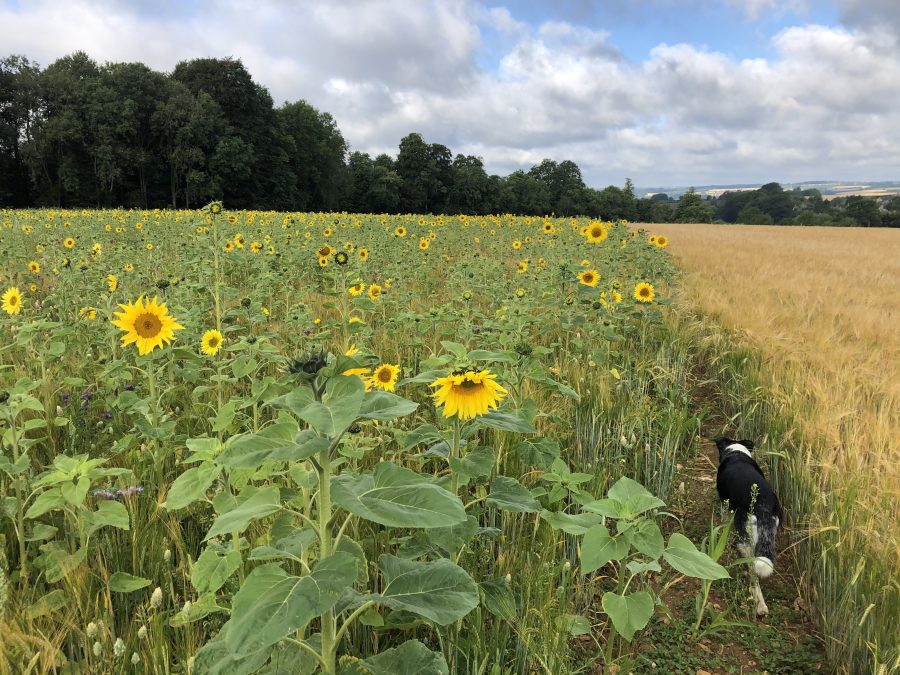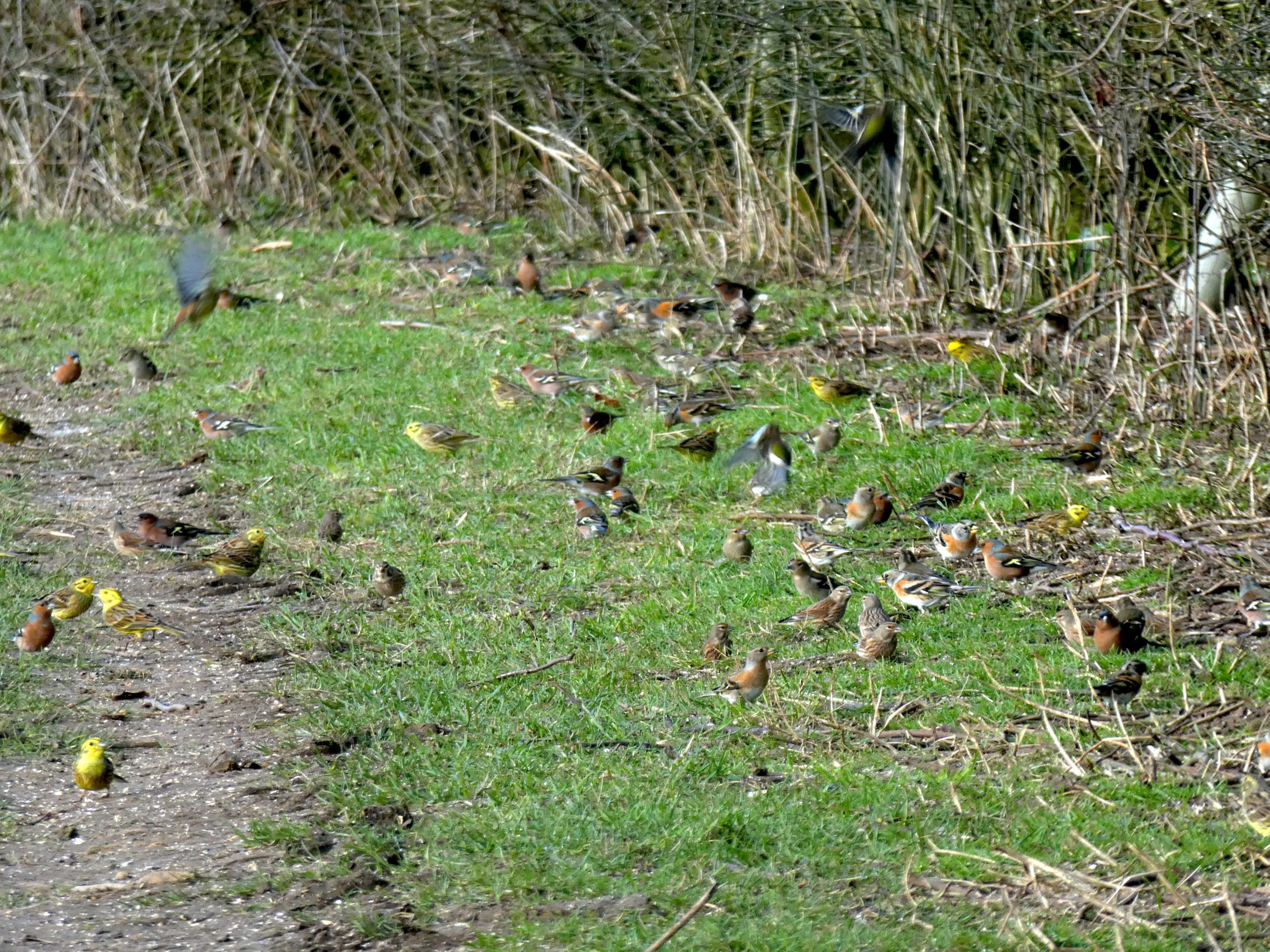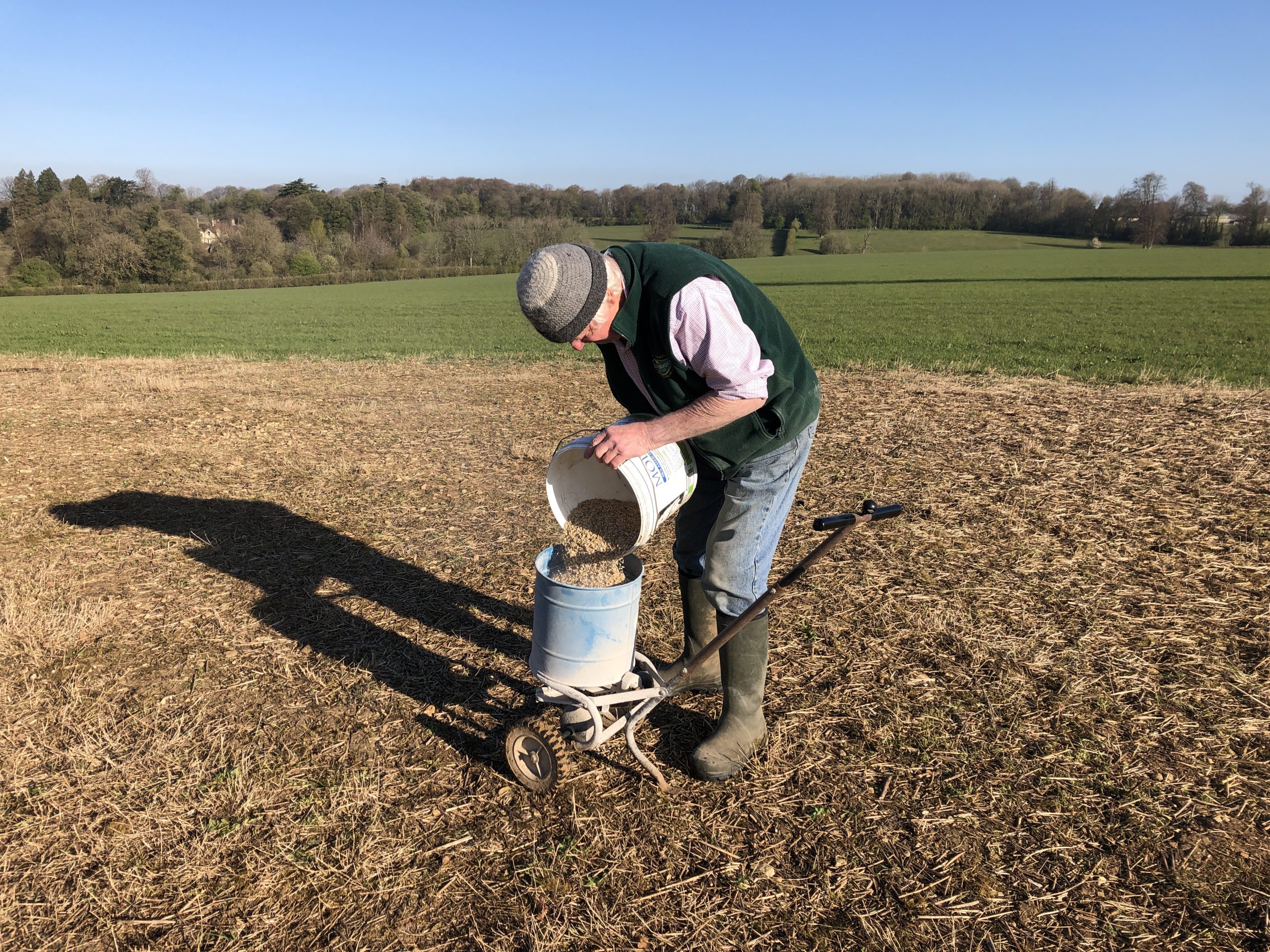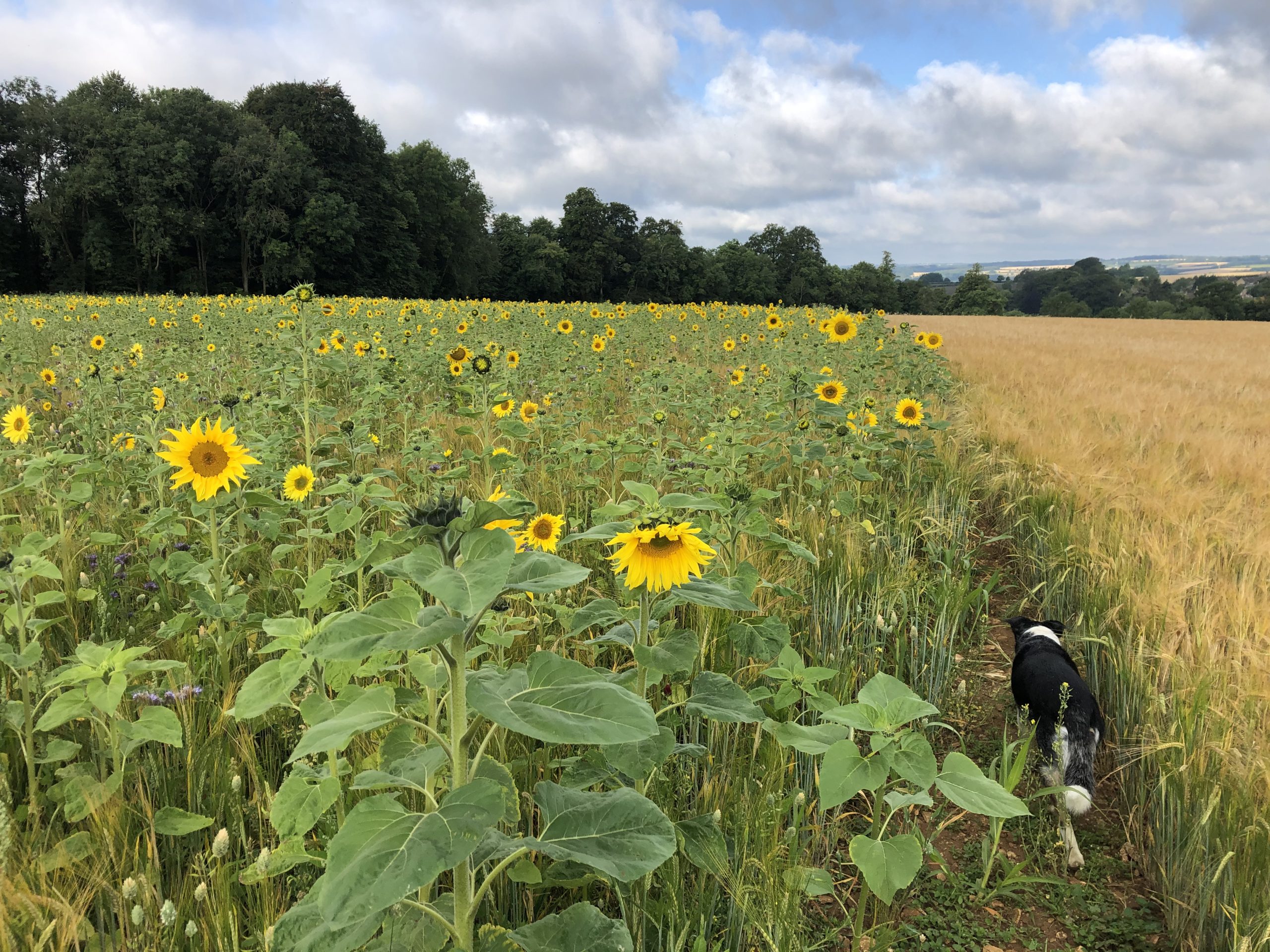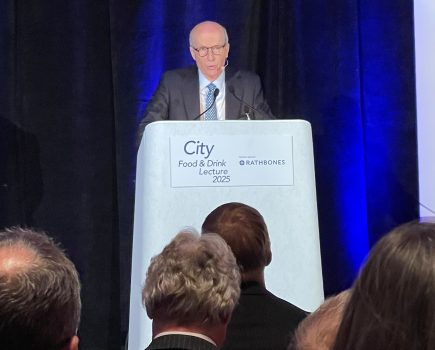Feeding birds in the garden over winter is no longer a mark of eccentricity but is firmly embedded in suburban culture, and has spawned profitable businesses supplying suburbia with tempting food mixes. For decades the RSPB has actively promoted feeding, and its efforts have been rewarded by the rise in suburban species and bird numbers, documented via the RSPB Garden Bird Count.
Farmers, with a few notable exceptions, have been much slower to take up this pastime on farm, even though arable work is less pressing during winter. It just isn’t real farming. Even DEFRA was slow to add feeding to its environmental schemes. Things are picking up now though, with increasing numbers of farmers contributing to the GWCT’s annual ‘Big Farm Bird Count’.
We have been feeding on our patch of land for over 20 years. It all started when a redoubtable lady, who ran a small local Bird Aid group, accosted me on one of our public footpaths. She suggested I might consider feeding our farmland birds? My grudging reply was that “I fed my garden birds, and planted wild bird seed mixes and the farm was broke, but if she provided the feed, I would indulge her and have a go”.
To my great surprise it worked. It worked far better than I thought possible. I was hooked and started recording the birds present. That first winter, I noticed a few unusual sparrows. Tree sparrows, with their brown heads and black cheek patches! This caused a flurry of local excitement.
Tree sparrows, once common, are now very rare. Dr Alan Larkman, chair of the Oxford Ornithological Society, was consulted and he suggested adding hanging feeders of millet and nest boxes. The numbers of these tree sparrows increased incredibly over the next few years, to many hundreds. Big numbers were maintained for five years then gradually dwindled to disappear completely in 2018. The tree sparrow decline coincided with rising numbers of house sparrows and we suspected the latter out-competed their cousins for breeding habitat. A dramatic demonstration of rapid ecological flux, if we needed one, to show how easy it is for mankind to affect the ecosystem for good and ill. Lasting solutions are less easy.
The supplementary feeding programme, now well supported by DEFRA, seemed so successful that we undertook a three-year study with Ian Wilkinson (Farm ED and Cotswold seeds) to supply a scientific backbone to our observations. This showed conclusively that sown mixes don’t last beyond midwinter and that supplementary feeding was effective, consistent and repeatable. In today’s farmed environment it is a lifesaver, but we must earnestly hope that the new environmental schemes will provide enough incentive and resource to regenerate a vibrant ecosystem, alongside profitable agriculture, without supplementary feeding.
We are nearing the end of this season’s feeding period, though we will continue with reducing amounts until mid May, depending on the weather and uptake, to ensure the small birds are in good condition to breed. It is also already time to be thinking about next winter. DEFRA has vamped up its program and payments for 2024 to make it well worthwhile for all farmers to consider. Sown mixes (AB9 & AHL2) are paid £853/Ha with the addition of £366/Ha for supplementary feeding (AB12). Supplementary feeding is currently linked to hecterage of sown, which I think is a shame. It should also be available as a stand-alone provision paid at a higher rate.
Mental health is, sadly, a pressing issue for farmers, largely attributable to stress, financial uncertainty and isolation. Preserving and enhancing our wildlife is not just a faddish public good but a very valuable personal therapeutic tool. Taking a little time each day, perhaps in company, to watch birds flocking to feed; listening for a few moments to birds singing to claim territory as the weather warms, followed later by masses of fledglings skittering in the hedges.
Appreciating all the butterflies and bumblebees on the margins and meadows with more insects on our windscreens in summer to be followed by the glorious autumnal palette of a beautiful thick mixed hedge full of berries. These precious sights, scents and sounds are strong medicine for the troubled mind and so well worth the effort and with no ill effects.

